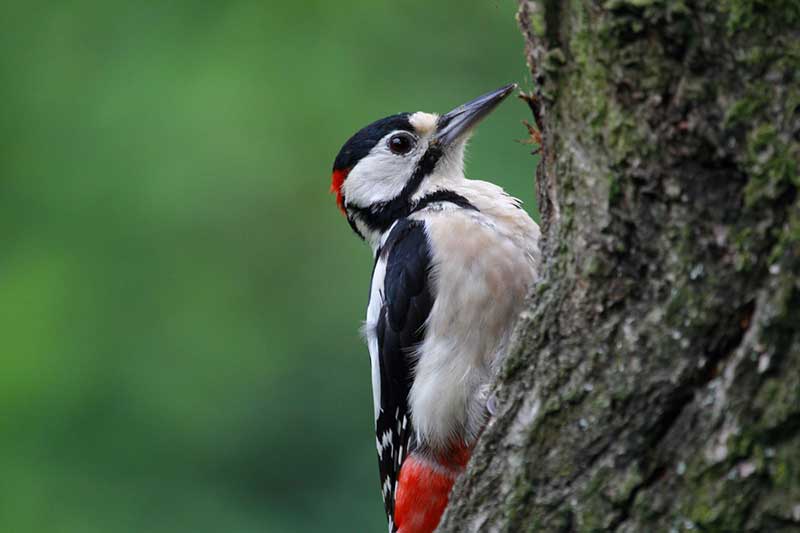Main Menu

If you spent all day banging your head against a wall, you’d likely end up with a nasty headache, or worse, a concussion. So how is it that woodpeckers can spend hours hammering their heads against tree trunks without suffering any visible side effects?
A team of scientists set out to investigate this question by studying great spotted woodpeckers and comparing them with hoopoes, a species that, although not a woodpecker, spends a significant amount of time pecking at the ground. The scientists aimed to compare the differences between wood-pecking and soil-pecking behaviours.
Using high-speed cameras to capture the birds’ movements in slow motion and force sensors to measure the strength of their pecking, the researchers collected detailed data. What they discovered was fascinating.
Woodpeckers can strike their heads up to 20 times per second, with some hitting as many as 12,000 times a day. They have a set of unique adaptations which allows this to happen without giving themselves a headache.
The scientists used micro-CT scans to analyse the shape and structure of the birds’ skulls. They also performed force tests to measure the strength of their beaks and bones. Using this data, they created computer simulations of the birds’ skulls to observe how force was distributed during pecking, and where fractures or strain might occur.
One key finding was that woodpeckers’ heads act like sophisticated shock absorbers. Plate-like bones in their skulls provide flexibility, helping to disperse the force of each impact. A specialised bone called the hyoid wraps around the woodpecker’s skull, acting like a seatbelt for the brain. This bone structure helps protect the bird’s most vital organ from harm.
A woodpecker’s upper beak is longer than its lower beak, creating an “overbite.” However, inside the skull, the lower beak’s bone is actually longer. This ensures that the lower beak absorbs most of the strain during pecking, diverting impact stress away from the skull and brain. This clever adaptation reduces the likelihood of brain injuries.
Woodpeckers don’t peck randomly; they use a precise technique. Unlike hoopoes, which peck repeatedly in the same spot, woodpeckers move their beaks slightly between strikes to avoid excessive wear on a single area. Moreover, woodpeckers always strike head-on rather than from the side, distributing force evenly and minimising the risk of injury.
Woodpeckers’ strong neck muscles play a vital role in their safety. Just before impact, these muscles contract to redirect the force of the strike down through the body. At the same time, thick inner eyelids close to protect the bird’s retinas. Without this adaptation, retinal tears, or even the eye popping out of its socket, could occur.
Woodpeckers also have small, stiff feathers around their nostrils to keep flying wood chips at bay. This ensures that they can focus on their work without being hindered by debris.
Woodpeckers have perfectly adapted to their head-banging lifestyle. Their flexible skulls, specialized beaks, strong neck muscles, and protective eyelids work together to shield their brains and bodies from harm.